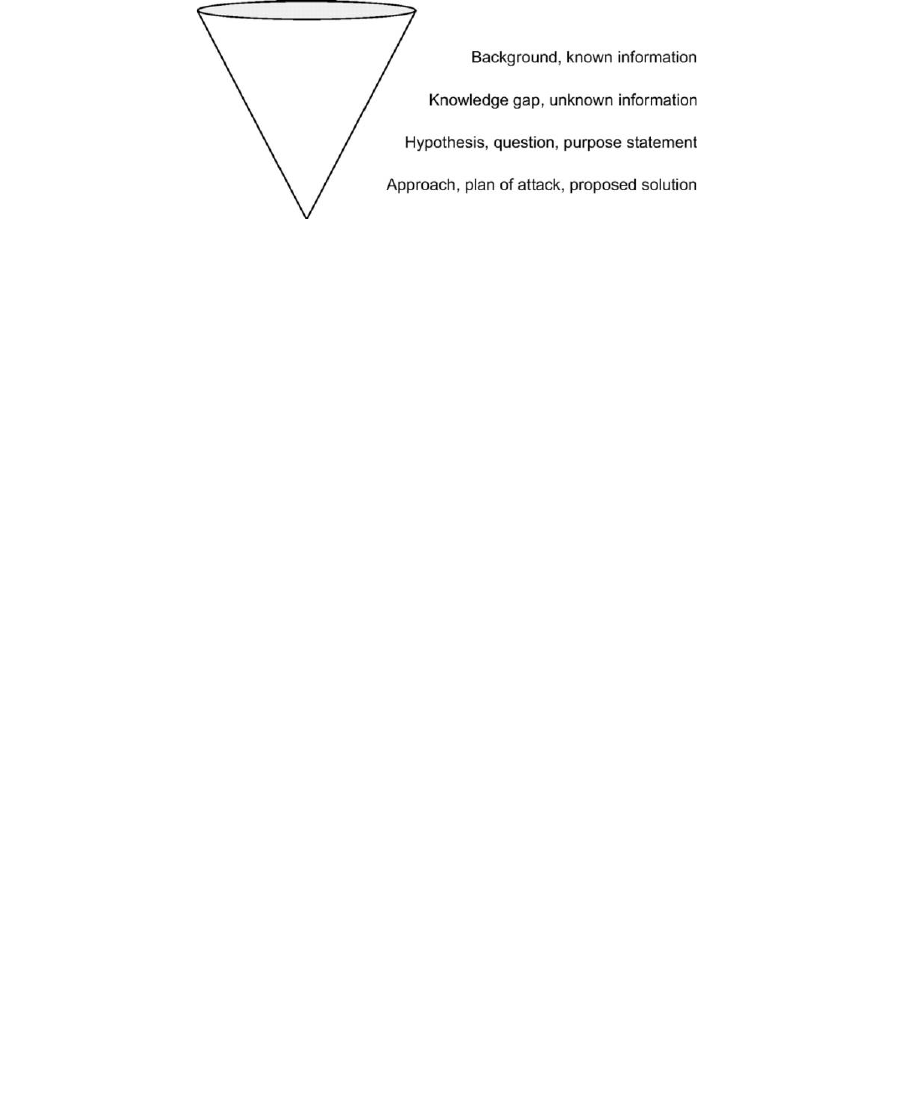
1
Biology Research Paper Requirements for BIOL 4960R/4970R/4980R
For fall and spring, the final paper is due to the Biology Division program no later than 5pm on Reading Day
of the semester enrolled, and on the last day of classes for the Thru Session in summer. Please email your
paper to biolo[email protected]. A hand-delivered, hard copy will not be accepted.
Example research papers can be found here: http://biosciences.uga.edu/forms
Paper Guidelines
• 10-page minimum (not including the title, reference pages, tables/figures). Ten pages are required no matter
how many hours you enroll in for the course.
• Typeface should be Times New Roman, 12-point.
• Paragraphs should be double-spaced with 1-inch margins.
• Submit your paper with the file name in the following format: Last name, first name_ BIOL
4960R/4970R/4980R
• The paper must consist of a single .pdf or .docx with all figures incorporated into the text of the
document (not grouped at the end). If your paper requires an Appendix, include this section following
the References. Papers submitted as multiple documents (e.g., PowerPoint slides) will be returned.
The paper must include the following sections:
Title Page
o Must contain:
▪ Research Paper Title
▪ Faculty Mentor Information: Name, Department, Email, and Phone Number
▪ Student Information: Name, Address, Email, and Phone Number
▪ Semester and year research was completed
▪ Course Number (i.e., BIOL 4960R/4970R/4980R)
Objective
o In 1-3 sentences, state the purpose of your research project.
Abstract
o In one paragraph (maximum 200 words), provide a summary of your research paper:
▪ State your purpose and the significance of your paper.
▪ Summarize your methodology (you will only be able to provide limited details).
▪ Summarize your results by stating your major findings.
▪ State major conclusions and implications.
Introduction
o Present tense: Write the Introduction in present tense.
o Key terms: Define key terms so that readers in other disciplines will understand them.
o Explicit language: Use explicit language (e.g. “we hypothesize”) as it helps the reader to find the
key parts of you study, such as your statement of purpose.
o 2-5 paragraphs: The Introduction is often in the range of two to five paragraphs long.

2
o Broad to narrow: Focus the Introduction around the hypothesis, specific questions, or aim of your
study. The Introduction can be represented as a cone: start with known information and narrow
down to your specific study.
Figure 1: Annesley TM. “It was a cold and rainy night.” Set the scene with a good introduction.” Clinical Chemistry 56 5 (May 2010): 708-713.
o What is known: First, provide context and background information about what is known on your
topic.
o What is NOT known: Then move from what is known to what is NOT known. Pinpoint the gaps
and limitations of previous studies. Include several citations in the Introduction, not just one or two.
What were the limitations of those studies that make the results uncertain?
o Hypothesis: Your Introduction should end with your hypothesis or specific question and explain
your approach to the research problem.
Methods
o Past tense: Write your Methods section in past tense (e.g. “We measured…”), as you’ve already
completed the research.
o Voice: The Methods section is the one place in your paper where you may opt to use passive voice.
(Remember: passive voice emphasizes the action and object: “The sample was placed under the
microscope.” Active voice emphasizes the subject: “We placed the sample under the microscope.”
o Recipe for replication: The Methods section should give a clear overview of how the research study
was conducted: it is the recipe for the study. It gives sufficient information so that someone else
could replicate the study.
o Narrative structure: This section should be written as a narrative, not as directives. For example,
instead of writing “Place the sample under the microscope,” say either “The sample was placed under
the microscope,” or “We placed the sample under the microscope.”
o Subsections: The Methods section should be written in paragraph form. You can break your
methods into smaller sections with subheadings (discuss related methods together) to help with
organization.
o Details: The Methods section should contain information about the following:
▪ Materials used to conduct the study (e.g. drugs, buffers, chemicals, gasses, reagents,
telescopes, microscopes, weighing scales, questionnaires, etc.)
▪ Experimental conditions (e.g. climate, pH, doses, replications, study subjects)
▪ Study subjects (if used) (e.g. type and sex of organism, weight, height, diet, etc.)
o Rationale: As you describe your actions during the experiment, explain your rationale for the any
protocol you developed. If you capped a test tube immediately after adding a solute to a solvent, why
did you do that? (That prompts two questions: why did you cap it, and why did you cap it
immediately?) Provide rationale as a way to explain your thinking to potential critics.

3
Results
o Past tense: Write your Results section in past tense (e.g. “We analyzed…”), as the events have
already occurred.
o Summarize: In the Results section, data, observations, and findings should be summarized, without
being interpreted.
o Tables, equations, charts, and figures: Include tables and figures (images or graphs) to present
findings clearly and concisely.
o Contextualize: Do not begin the Results section with tables and figures. Present some context in
paragraph form before you incorporate your exhibits.
o Tables and Figures:
▪ Tables and figures must include a title, a number, and a brief description (Table 1, 2, 3…).
▪ Most often, tables and figures appear in the text just after they are mentioned.
▪ A table is identified by a heading, which should go above the table.
▪ A figure is identified by a caption, which should go below the figure.
▪ The title should be a brief phrase stating the type of analysis or a sentence summarizing the
major result seen in the figure.
▪ All figures and tables should be referred to in the body of the paper (i.e. “see Table 1”) and
need to be numbered in the order they are discussed in the paper.
o Describe trends that emerge: The reader can go to a table or figure to get data themselves: the
Results section should give a higher-level summary. Which significant data do you want your readers
notice? What are the overall results that a table shows? Remember: do not interpret what your data
means in the Results section: save your interpretation for the Discussion section.
Discussion
o Present tense: Write the Discussion section in present tense.
o Interpretation: The Discussion section should interpret your results and convey why they are
important.
o Reverse Introduction: The Discussion section can be represented by inverting the cone of your
Introduction.
Figure 2: Visual Representation of Discussion Section
o Address hypothesis: The Discussion section starts by answering the question asked at the end of
the Introduction. Explain whether or not your data support your hypothesis. Remember, data do not
prove or disprove a hypothesis; rather they add support for or do not provide support for a
hypothesis.
o Anomalous data: Acknowledge any anomalous data or deviations from what you expected.
o Claims: Refer to evidence to derive conclusions about the process you’re studying.
o Avoid overreaching: Avoid overstating your findings in the Discussion section. Focus on the
interpretations you can support with evidence, and avoid coming to conclusions that are not
supported.
Answer the question you asked at the end of the Introduction
Support your conclusion
Defend your conclusion
Give the big picture

4
o Previous work: Discuss your findings in relation to other research: say how your results fit into the
context of the literature.
o Limitations: State limitations of your research. Anticipate the criticisms that readers may have and
defend your conclusions against those criticisms.
o Implications: At the end, give the big-picture implications of your research. What is the relevance of
your findings beyond the experiment? Also, consider where future research might further develop
your findings.
References
o Start the References section on a new page.
o All literature sources that were cited in your paper must appear in the reference section. Only cite
materials that were referenced in your paper.
o Journals often have their own citation styles. You may follow the citation format of a scientific
journal in your research field for your paper. Alternatively, you may use the Scientific Style and
Format Name-Year format, as specified in the Council of Science Editors (CSE) manual (guidelines
for CSE Name-Year format are summarized below).
o For the References page in the CSE Name-Year format, list all references alphabetically by first
author’s last name. If there is more than one study by the same author, list them in date order (oldest
to newest). Use hanging indent for the second line of each reference:
Last-name First-initial. Date. Paper title. Journal title. Volume(issue):page numbers.
Example:
Cox J, Engstrom RT. 2001. Influence of the spatial pattern of conserved lands on the persistence of a large
population of red-cockaded woodpeckers. Biological Conservation. 100(1):137-150.
Other Important Information:
In-text Citations
o In the body of your paper, use reference citations to give credit to the people who have written the
articles you use.
o When you refer to someone else’s work, paraphrase or summarize rather than quoting (remember
the extensive training you had on this in BIOL 1107!).
o If you are following the style guide and citation format from a scientific journal in your research field,
then follow their guidelines for in-text citations.
o If you are following the CSE Name-Year format for your references, then your in-text citations
should be in the following format: (Author-Surname Year). (Surname is the family name, or last
name.)
Example:
The immune system plays an essential role in protecting the body, as one of its main roles is the
clearance of viral antigens (Thibodeau 2005).
Example of citation appearing as part of a sentence:
Thibodeau (2005) determined that the immune system plays an essential role in protecting the body,
as one of its main roles is the clearance of viral antigens.
o When a work has one or two authors, cite both surnames and the date of publication.
Example:
Evidence of this phenomenon has been demonstrated in agrarian regions in India (Singh and Sharma
2004).

5
Example of citation appearing as part of a sentence:
Singh and Sharma (2004) demonstrated this phenomenon in agrarian regions in India.
o If two or more authors have the same surname, include their initials in each citation.
Example:
Later studies (Mardis KL 2011 and Mardis LA 2012) established that…
Example of citation appearing as part of a sentence:
Mardis KL (2011) and Mardis LA (2012) established that…
o For co-author groups of three or more authors, cite only the surname of the first author followed by
et al. and the date.
Example:
Lithium carbonate increases the anorectic’s intake of fatty foods and thus produces weight gain
(Gross et al. 1980).
Example of citation appearing as part of a sentence:
Gross et al. (1980) demonstrated that lithium carbonate increases the anorectic’s intake of fatty foods
and thus produces weight gain.
o Use multiple citations if several articles have the same findings. When several in-text references occur
at the same point, give them in chronologic sequence from earliest to latest, separated by semicolons.
For multiple citations from the same author, include the surname only once and list the years of
publication chronologically, separated by commas.
Example:
Research has also indicated that a clinician’s assessment of a particular person is generally not
improved by the use of projective assessment techniques (Soskin and Anders 1959; Golden 1964;
Smith 1984, 1988).
o Cite sources as close as practicable to the information they support. This might mean citing a source
at the end of a sentence or in the middle of a sentence.
Example:
Initial infection of tubers by H. solani occurs in the field either from the seed tuber (Jellis and Taylor
1977) or soil (Merida and Loria 1994).
Final Tips
o Tense: Use present tense in the Introduction and Discussion sections. Use past tense in the
Methods and Results sections.
o Voice: Use active voice in the Introduction, Results, and Discussion sections. You may choose
to use active or passive voice in the Methods section. (e.g. “We placed the sample under the
microscope.” or “The sample was placed under the microscope.”)
o Write simply: Avoid lengthy and complex sentences. Instead of “The initial hypotheses of the
results of this series of experiments are as follows,” write “My hypothesis is….”
o Scientific names must be italicized, i.e. E. coli
o Writing process: Though the order of sections in your final draft should be Introduction,
Methods, Results, Discussion, it’s often easier to develop a research paper by working on the
sections of it in the following order:
▪ Create your tables and figures first – they contain the story of your paper
▪ Results
6
▪ Methods
▪ Discussion
▪ Introduction
▪ Abstract
